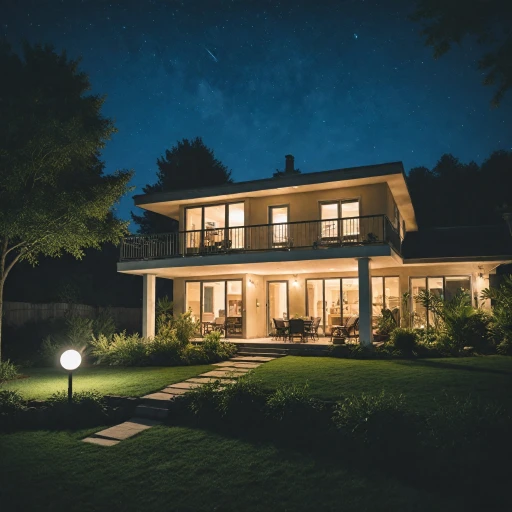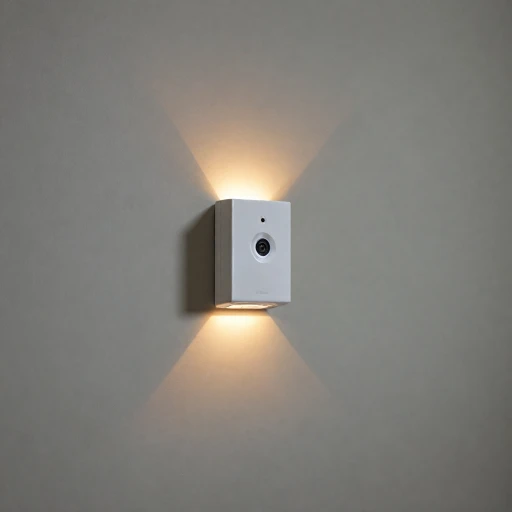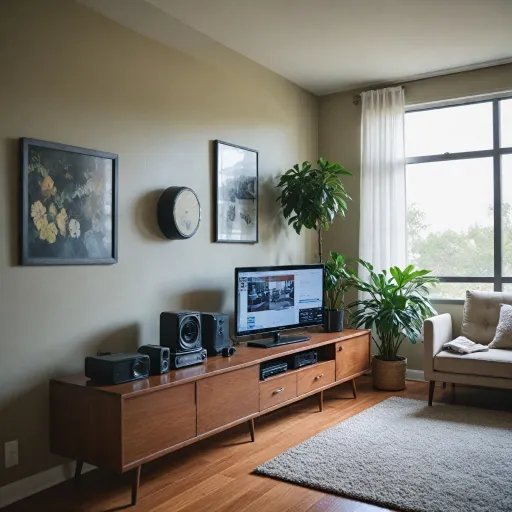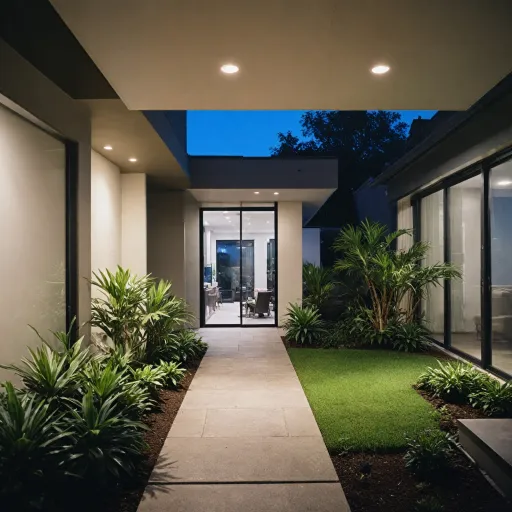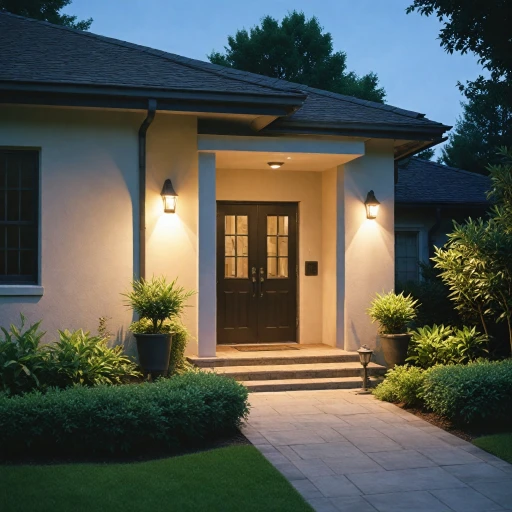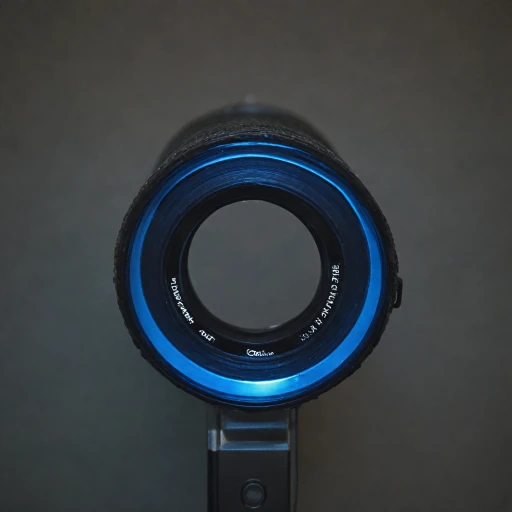
What is an Infrared Illuminator?
Defining Infrared Illuminators
Infrared illuminators are essential components in modern security cameras, particularly those designed for night vision. These devices emit infrared light, which is invisible to the human eye but can be detected by the camera's sensors. This capability allows cameras to capture clear images even in low light or complete darkness, enhancing the security of your property.
Infrared illuminators work by using infrared LEDs to produce light that is outside the visible spectrum. This light source is crucial for security cameras that need to operate effectively at night or in poorly lit environments. The range and power of these illuminators can vary, affecting how far and how clearly a camera can see in the dark.
Understanding the role of infrared illuminators is key to maximizing the effectiveness of your security system. As we explore further, we'll discuss how these illuminators improve night vision and what to consider when comparing different models. Stay tuned to learn more about installation tips and common challenges you might face with these devices.
How Infrared Illuminators Improve Night Vision
Enhancing Night Vision Capabilities
One of the most remarkable features of infrared illuminators is their ability to significantly boost night vision capabilities for security cameras. Unlike traditional light sources, infrared light provides illumination that is invisible to the human eye, allowing cameras to capture clear images even in complete darkness. When integrated with security cameras, these illuminators work by emitting infrared light, which is then reflected off objects and captured by the camera's lens.
Infrared LEDs play a crucial role in this process, offering a powerful, long-range light source that enhances the camera's effective range. This is particularly useful for monitoring large areas at night, ensuring comprehensive coverage without the distracting glare of white lights. In low-light conditions, the difference that infrared illuminators make is evident as they enable the distinguishable observation of surroundings without alerting potential intruders.
Moreover, by employing infrared technology, your security system can maintain a subtle presence. This is essential for not only capturing intruders but also for maintaining an undisturbed environment. With customer reviews often praising the nighttime clarity provided, infrared illuminators are a smart addition for anyone seeking to enhance their home's security. To further understand the impact of technologies like motion sensitivity on security effectiveness, you can explore this resource.
Installation and Setup of Infrared Illuminators
Efficient Setup for Optimal Infrared Performance
Setting up an infrared illuminator alongside your security cameras can dramatically enhance night vision capabilities, allowing you to clearly capture footage even in low light conditions. Initially, it is essential to review customer reviews and product specifications to ensure you select an illuminator that functions well with your particular camera model and intended range. Once you have chosen your illuminator, the installation process involves a few critical steps:- Check Compatibility: First, ensure that the infrared illuminator is compatible with your existing camera system. Consider factors like power requirements and whether the camera is designed to work with external infrared illuminators.
- Positioning is Key: The placement of the illuminator directly affects its performance. Install the illuminator so that the infrared light covers the area you want to monitor without obstructing the camera's view. This ensures the light effectively reveals details without glaring reflections.
- Adjust the Angle and Range: To maximize range and clarity, adjust the illuminator's angle to match the camera's field of view. This synchronization ensures the light emitted by the illuminator matches the camera's night vision capabilities, effectively broadening its coverage area.
- Mind the Range of Infrared Leds: Consider the effective range of the infrared LEDs in the illuminator. A long range illuminator is vital for areas that require coverage over distances. However, any misalignment might result in inadequate lighting.
- Avoid White Light Interference: Be cautious of any overlapping sources of white light nearby, as they can diminish the effectiveness of the infrared illumination and interfere with the camera's ability to capture clear images at night.
Common Challenges with Infrared Illuminators
Troubleshooting Infrared Illuminator Issues
While infrared illuminators significantly enhance the capability of security cameras, they come with their own set of challenges. Understanding these hurdles can help maintain optimal performance and ensure the night vision feature functions effectively. Below are some common issues encountered and tips to address them:
- Power Supply: One of the common challenges with infrared illuminators is providing them with a stable power source. Fluctuations can lead to decreased performance, so it's crucial to ensure they receive consistent power to operate effectively throughout the night. Opt for high-quality power supplies to mitigate this issue.
- Range and Coverage: The effective range of infrared illuminators can vary. It's essential to match the illuminator's range with your security camera's field of view to ensure full coverage. If the range is too short, shadows and dark spots may appear, potentially compromising the security.
- LED Burnout: Over time, the infrared LEDs can burn out, reducing their effectiveness. Regular maintenance checks can ensure that the LEDs are functioning optimally. Consider investing in illuminators known for their durability and longevity, judging by customer reviews.
- Location and Setup: Positioning the infrared illuminator correctly is key to maximizing its performance. Avoid placing them too close to reflective surfaces, as this can interfere with the light emissions, causing glare or "washout" effects on the camera footage. Adjust the angle and height to avoid this issue.
- Weather and Environmental Factors: Dust, humidity, and extreme temperatures can affect the performance of infrared illuminators. Ensure your security setup includes weatherproof equipment if it is exposed to harsh environmental conditions.
Being aware of and addressing these challenges will ensure that your infrared illuminators enhance the night vision of your security cameras effectively, providing reliable surveillance in low light conditions.
Comparing Infrared Illuminators: What to Look For
Evaluating and Selecting Quality Infrared Illuminators
When comparing infrared illuminators for your security cameras, it's crucial to consider several key factors to ensure you make an informed decision. The quality of these components can significantly impact the performance of your night vision capabilities.- Power and Range: Consider the power output of the infrared LEDs and the effective range they offer. A high-powered illuminator with long-range infrared capabilities can provide comprehensive coverage, enhancing the security of your premises in low-light conditions.
- Light Sources and Visibility: Evaluate the type of infrared light the illuminator uses. Some illuminators emit an 'invisible' infrared light, ensuring they do not disrupt the human eye or attract unwanted attention to your security setup.
- LED Quality and Quantity: The quality and number of LEDs used in the illuminator can affect brightness and the uniformity of light. More LEDs often mean stronger illumination and better night vision performance.
- Compatibility with Cameras: Ensure the infrared illuminators are compatible with your existing security cameras and their specific needs. It's essential they align with the camera's night vision capabilities.
- Customer Reviews: Finally, reading customer reviews can provide insights into real-world performance and potential issues. Reviews from other users in the United States or similar locales can highlight considerations you might not have thought of, ensuring you're well-informed.

